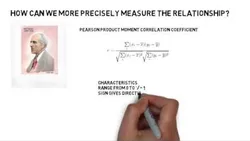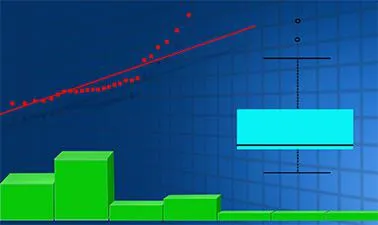
Biostatistics Mini-Lectures 
This mini-lecture series covers a range of topics in biostatistics, including correlation, t-test, ANCOVA, MANOVA, non-parametric analysis, ordinal scale data analysis techniques, and the development of a prospectus and dissertation prospectus presentation. It provides an overview of the fundamentals of biostatistics and the tools needed to analyze data. ▼
ADVERTISEMENT
Course Feature
![]() Cost:
Cost:
Free
![]() Provider:
Provider:
Youtube
![]() Certificate:
Certificate:
Paid Certification
![]() Language:
Language:
English
![]() Start Date:
Start Date:
On-Demand
Course Overview
❗The content presented here is sourced directly from Youtube platform. For comprehensive course details, including enrollment information, simply click on the 'Go to class' link on our website.
Updated in [February 21st, 2023]
Correlation.
t-test.
ANCOVA.
MANOVA.
Introduction to Non-Parametric Analysis.
Ordinal Scale Data Analysis Techniques.
Developing the Prospectus.
Developing the Dissertation Prospectus Presentation.
(Please note that we obtained the following content based on information that users may want to know, such as skills, applicable scenarios, future development, etc., combined with AI tools, and have been manually reviewed)
1. Correlation: Learners can obtain learning value from understanding the concept of correlation and its application in biostatistics. Correlation is a statistical measure that describes the strength of the relationship between two variables. It is used to determine the degree to which two variables are related and can be used to predict the behavior of one variable based on the behavior of the other.
2. t-test: Learners can obtain learning value from understanding the concept of t-test and its application in biostatistics. The t-test is a statistical test used to compare the means of two groups of data. It is used to determine if there is a statistically significant difference between the means of two groups. It is also used to compare the means of two variables within a single group of data.
3. ANCOVA: Learners can obtain learning value from understanding the concept of ANCOVA and its application in biostatistics. ANCOVA is a statistical technique used to compare the means of two or more groups of data while controlling for the effects of one or more other variables. It is used to determine if there is a statistically significant difference between the means of two or more groups after controlling for the effects of one or more other variables.
4. MANOVA: Learners can obtain learning value from understanding the concept of MANOVA and its application in biostatistics. MANOVA is a statistical technique used to compare the means of two or more groups of data while controlling for the effects of one or more other variables. It is used to determine if there is a statistically significant difference between the means of two or more groups after controlling for the effects of one or more other variables.
5. Introduction to Non-Parametric Analysis: Learners can obtain learning value from understanding the concept of non-parametric analysis and its application in biostatistics. Non-parametric analysis is a type of statistical analysis that does not assume that the data follows a normal distribution. It is used to analyze data that is not normally distributed or that does not have a known distribution. It is also used to analyze data that is not normally distributed or that does not have a known distribution.
[Applications]
After completing the Biostatistics Mini-Lectures course, participants can apply the knowledge they have gained to their own research projects. They can use the correlation, t-test, ANCOVA, MANOVA, and non-parametric analysis techniques to analyze data. They can also use the ordinal scale data analysis techniques to analyze data from surveys and other sources. Additionally, they can use the information from the course to develop a prospectus and dissertation prospectus presentation.
[Career Paths]
1. Biostatistician: Biostatisticians use their knowledge of mathematics, statistics, and computer science to analyze and interpret biological data. They are responsible for designing and conducting experiments, analyzing data, and interpreting results. They also develop new methods and techniques for data analysis. As the demand for biostatisticians increases, the need for professionals with advanced degrees in biostatistics is also increasing.
2. Data Scientist: Data scientists use their knowledge of mathematics, statistics, and computer science to analyze and interpret large datasets. They are responsible for designing and conducting experiments, analyzing data, and interpreting results. They also develop new methods and techniques for data analysis. As the demand for data scientists increases, the need for professionals with advanced degrees in data science is also increasing.
3. Clinical Research Associate: Clinical research associates are responsible for designing and conducting clinical trials, analyzing data, and interpreting results. They also develop new methods and techniques for data analysis. As the demand for clinical research associates increases, the need for professionals with advanced degrees in clinical research is also increasing.
4. Epidemiologist: Epidemiologists use their knowledge of mathematics, statistics, and computer science to analyze and interpret epidemiological data. They are responsible for designing and conducting epidemiological studies, analyzing data, and interpreting results. They also develop new methods and techniques for data analysis. As the demand for epidemiologists increases, the need for professionals with advanced degrees in epidemiology is also increasing.
Course Provider

Provider Youtube's Stats at AZClass
Discussion and Reviews
0.0 (Based on 0 reviews)
Explore Similar Online Courses

Editorial Illustration: Communicating an Idea Visually

Learn TensorFlow and Deep Learning fundamentals with Python (code-first introduction) Part 1&2

Python for Informatics: Exploring Information

Social Network Analysis

Introduction to Systematic Review and Meta-Analysis

The Analytics Edge

DCO042 - Python For Informatics

Causal Diagrams: Draw Your Assumptions Before Your Conclusions

Whole genome sequencing of bacterial genomes - tools and applications

Doing Clinical Research: Biostatistics with the Wolfram Language

Introduction to Applied Biostatistics: Statistics for Medical Research


Start your review of Biostatistics Mini-Lectures